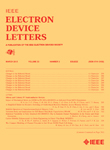
IEEE ELECTRON DEVICE LETTERS
Scope & Guideline
Pioneering Research in Electrical Engineering
Introduction
Aims and Scopes
- Semiconductor Devices and Materials:
Research on various semiconductor materials, including GaN, SiC, and oxide semiconductors, focusing on their electronic and optoelectronic properties. - Device Fabrication Techniques:
Innovative fabrication methods for electronic devices, including layer deposition techniques, etching methods, and integration processes for advanced device architectures. - Device Characterization and Modeling:
Studies involving the electrical characterization of devices, modeling of device behavior, and simulation techniques to predict performance under various conditions. - Emerging Memory Technologies:
Exploration of new memory technologies such as ferroelectric FETs, resistive RAM, and other non-volatile memory devices, focusing on their operational principles and applications. - Neuromorphic Computing and Synaptic Devices:
Research into devices that mimic neural functions, including memristors and synaptic transistors, aimed at advancing neuromorphic computing technologies. - High-Power and High-Frequency Devices:
Development and analysis of devices designed for high-power and high-frequency applications, including RF amplifiers and microwave devices.
Trending and Emerging
- 2D Materials and Heterostructures:
Increased research on two-dimensional materials, such as graphene and transition metal dichalcogenides, focusing on their unique electronic properties and potential applications in next-generation devices. - Ferroelectric and Hybrid Devices:
Growing interest in ferroelectric materials and devices, particularly ferroelectric FETs, which are being investigated for their potential in low-power and high-density memory applications. - Integration of Machine Learning with Electronics:
Emerging studies that explore the integration of machine learning techniques with electronic devices for applications in neuromorphic computing and smart electronics. - Flexible and Wearable Electronics:
A significant trend in research focused on flexible electronics, including sensors and displays that can be integrated into wearable technology, highlighting advances in materials and fabrication techniques. - Energy-Efficient and Low-Power Devices:
Research emphasizing the development of energy-efficient electronic devices, which are crucial for sustainable technology, including low-power transistors and energy harvesting devices.
Declining or Waning
- Traditional Silicon-Based Devices:
Research related to conventional silicon-based devices, such as standard MOSFETs, has decreased, possibly due to the increasing interest in wide bandgap and novel materials that offer better performance. - Basic Research on Bulk Materials:
Studies focused primarily on the bulk properties of semiconductor materials without application in device contexts are appearing less frequently, as the emphasis shifts towards more applied research. - Passive Electronic Components:
The exploration of passive components such as resistors and capacitors in the context of electronic devices has waned, with a stronger focus on active components and innovative device structures.
Similar Journals
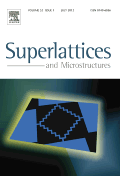
SUPERLATTICES AND MICROSTRUCTURES
Exploring the intricate world of superlattices.SUPERLATTICES AND MICROSTRUCTURES is a premier journal dedicated to the exploration and dissemination of cutting-edge research in the fields of Condensed Matter Physics, Electrical and Electronic Engineering, and Materials Science. Published by Academic Press Ltd - Elsevier Science Ltd, this journal has established itself as an important platform for scholars and industry professionals to share their findings related to the design, fabrication, and application of superlattices and microstructured materials. With a commendable impact factor reflected in its rankings—positioned within the top quartile in Physics and Astronomy as well as Electrical and Electronic Engineering—it offers high visibility and influence in the academic community. The journal has covered significant contributions from 1985 to 2022, although access options have transitioned, making staying current essential for researchers and practitioners alike. This journal not only serves as a repository of knowledge but also fosters collaboration and innovation in materials science and related disciplines.
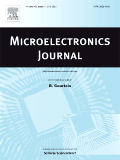
MICROELECTRONICS JOURNAL
Innovating Insights in Nanotechnology and Materials ScienceMICROELECTRONICS JOURNAL, published by Elsevier Sci Ltd since 1974, serves as a pivotal platform for disseminating cutting-edge research in the realms of microelectronics, nanotechnology, and materials science. With editions spanning from 1974 to 2024, the journal is well-respected within the scientific community, boasting a strong presence in key categories such as Atomic and Molecular Physics, Condensed Matter Physics, and Electrical and Electronic Engineering, as evidenced by its Q3 ranking in 2023. Researchers and professionals engaged in the exploration of electronic materials, optical applications, and nanoscale innovations can greatly benefit from the journal's insights, which situate their work within a robust academic framework. Although the journal does not currently offer open access, its rigorous peer-review process and high visibility in Scopus rankings—including a percentile ranking of 58th in Condensed Matter Physics—make it an essential resource for anyone looking to stay at the forefront of advancements in microelectronics and related fields.
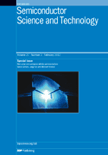
SEMICONDUCTOR SCIENCE AND TECHNOLOGY
Elevating research standards in electrical and electronic engineering.Semiconductor Science and Technology is a pivotal journal in the fields of condensed matter physics, electrical and electronic engineering, and materials science, published by IOP Publishing Ltd. With an ISSN of 0268-1242 and an E-ISSN of 1361-6641, this esteemed journal has been disseminating groundbreaking research since 1986 and is set to continue through 2024. Recognized in the latest categorizations, it holds a notable Q2 ranking in Condensed Matter Physics, Electrical and Electronic Engineering, and Materials Chemistry, alongside a Q3 ranking in Electronic, Optical, and Magnetic Materials, highlighting its significant contribution to the advancement of these disciplines. Although it does not operate under an open access model, the journal provides critical access options for researchers and professionals seeking to foster innovation and collaboration within the semiconductor community. As a vital resource, Semiconductor Science and Technology not only supports the dissemination of high-quality research but also serves as a platform for emerging trends and developments that are shaping the future of semiconductor technology.

Optoelectronics and Advanced Materials-Rapid Communications
Catalyzing Knowledge Exchange in the Realm of Advanced Materials.Optoelectronics and Advanced Materials-Rapid Communications is a pivotal journal in the field of optoelectronics, specializing in the rapid dissemination of original research and reviews concerning advanced materials and their applications. Published by the NATL INST OPTOELECTRONICS in Romania, this journal has been instrumental for researchers and professionals since its inception in 2008. With an E-ISSN of 2065-3824, it offers a platform for innovative studies across various disciplines, focusing on both theoretical and practical advancements in electrical and electronic engineering, as well as electronic, optical, and magnetic materials. Although currently categorized in the Q4 quartile based on the 2023 Scopus rankings, the journal is dedicated to enhancing its visibility and citation impact among the scientific community. By facilitating open access to cutting-edge research, Optoelectronics and Advanced Materials-Rapid Communications not only addresses the needs of emerging scholars and industry professionals but also contributes to the broader discourse on materials science. As it continues to evolve through 2024 and beyond, the journal remains an essential resource for those committed to advancing knowledge in optoelectronic technologies.
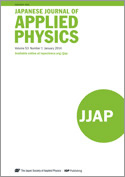
JAPANESE JOURNAL OF APPLIED PHYSICS
Bridging Theory and Practice in PhysicsThe Japanese Journal of Applied Physics is a premier publication in the field of applied physics, offering a platform for researchers and professionals to present their findings and innovations. Published by IOP Publishing Ltd, this esteemed journal has been active since 1963 and continues to contribute significantly to the understanding and advancement of applied physics across diverse applications. The journal is recognized for its rigorous peer-review process and high-quality publications, evidenced by its 2023 ranking of Q2 in Engineering (Miscellaneous) and Q3 in Physics and Astronomy (Miscellaneous). With an accessible ISSN of 0021-4922 and E-ISSN 1347-4065, the journal cultivates a global readership, fostering collaboration and innovation within the scientific community. Although the journal does not currently offer open access options, its valuable insights into the latest technological advancements and theoretical developments remain crucial for students, researchers, and industry professionals alike. By bridging the gap between fundamental physics and practical applications, the Japanese Journal of Applied Physics plays a vital role in shaping the future of applied sciences in Japan and beyond.

Progress in Superconductivity and Cryogenics
Shaping the Future of Electrical Engineering with SuperconductivityProgress in Superconductivity and Cryogenics is a distinguished academic journal published by the Korea Institute of Applied Superconductivity & Cryogenics, dedicated to advancing the field of superconductivity and cryogenic technologies. Since its inception in 2009, this journal has served as a pivotal platform for researchers and practitioners, promoting the dissemination of innovative findings and methodologies. Although currently positioned in Q4 quartiles in both Electrical and Electronic Engineering and Electronic, Optical and Magnetic Materials, the journal continually strives for excellence, offering insights that are essential for understanding the complexities of superconducting materials and their applications. While currently not an open-access journal, it provides invaluable research to the global scientific community. The journal's address is located in Changwon, South Korea, and aims to bridge the gap between theoretical research and practical implementation, making it a crucial resource for those engaged in the vibrant study of superconductivity.

CURRENT APPLIED PHYSICS
Fostering Interdisciplinary Insights in Physical Sciences.Current Applied Physics is a leading journal published by Elsevier, specializing in the dynamic fields of Physics and Materials Science. With an ISSN of 1567-1739 and an E-ISSN of 1878-1675, this journal focuses on the latest advancements and applications of physics principles in various practical domains. Operating from the innovative hub of Amsterdam, Netherlands, Current Applied Physics occupies a significant niche in the scientific community, evidenced by its Q2 ranking in both the Physics and Astronomy and Materials Science categories for the year 2023, along with impressive Scopus rankings that highlight its relevance in the fields of General Physics and General Materials Science. The journal's scope encompasses a wide range of topics, fostering interdisciplinary collaboration and facilitating the exchange of knowledge among researchers, professionals, and students. Each issue features peer-reviewed articles that contribute to the understanding and application of physical sciences, making it an essential resource for those aiming to stay at the forefront of research and innovation in applied physics.

JOURNAL OF VACUUM SCIENCE & TECHNOLOGY B
Exploring Innovations in Condensed Matter and EngineeringJOURNAL OF VACUUM SCIENCE & TECHNOLOGY B, published by the AIP Publishing, serves as a vital platform for the dissemination of research in the field of vacuum science and technology. With an ISSN of 2166-2746 and E-ISSN of 2166-2754, this peer-reviewed journal covers a wide array of topics, including condensed matter physics, electrical and electronic engineering, and various materials sciences, underscored by its Q3 quartile rankings across multiple categories in 2023. Although currently operating under a subscription model, the journal is recognized for its robust editorial standards and contribution to advancements in instrumentation and process technology, making it an essential resource for researchers and professionals seeking to stay at the forefront of the field. The journal's comprehensive approach addresses both theoretical and practical aspects of vacuum technology, fostering innovation and collaboration among the academic community. Additionally, the journal spans converged years of research from 1991 to 1992 and 2009 to 2024, reflecting its dynamic evolution and relevance in addressing contemporary scientific inquiries.

Advanced Electronic Materials
Advancing Knowledge in Cutting-Edge MaterialsAdvanced Electronic Materials is an esteemed journal published by Wiley, dedicated to the forefront of materials science, particularly in the areas of electronic, optical, and magnetic materials. With a commendable impact factor that places it in the Q1 quartile of its category and a Scopus rank of 36 out of 284, the journal is a vital resource for researchers, professionals, and students aiming to contribute to this rapidly evolving field. Launched in 2015 and fully transitioned to Open Access in 2023, the journal promotes widespread dissemination of knowledge, ensuring accessibility to groundbreaking research findings. With its address located in Germany at 111 River St, Hoboken 07030-5774, NJ, it serves a global academic community eager to explore innovative materials technologies that influence diverse applications ranging from consumer electronics to advanced manufacturing. As researchers seek to push the boundaries of what is possible with materials, Advanced Electronic Materials stands as a premier platform for sharing, discovering, and advancing knowledge in this essential domain.

Active and Passive Electronic Components
Bridging Research and Application in ElectronicsActive and Passive Electronic Components, published by HINDAWI LTD, stands as a significant open-access journal dedicated to the fields of electrical and electronic engineering, as well as materials science, particularly focusing on electronic, optical, and magnetic materials. Established in 1985, this journal aims to disseminate high-quality research, experimental studies, and theoretical analyses that contribute to advancements in electronic component technology and applications. Despite its recent category quartile rankings of Q4 in both relevant fields as of 2023, the journal plays an essential role in providing open access to critical findings that may benefit diverse sectors including telecommunications, consumer electronics, and renewable energy systems. Researchers, professionals, and students are encouraged to engage with the latest studies published in this journal, which has seen periods of publication interruption yet remains dedicated to fostering innovative research in its scope. With a commitment to open access, articles are freely available, promoting wider dissemination and collaboration within the scientific community.